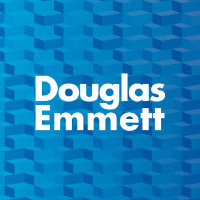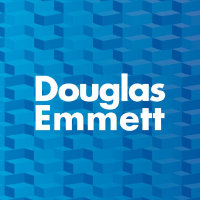
Douglas Emmett Inc
NYSE:DEI


| US |

|
Johnson & Johnson
NYSE:JNJ
|
Pharmaceuticals
|
| US |

|
Berkshire Hathaway Inc
NYSE:BRK.A
|
Financial Services
|
| US |

|
Bank of America Corp
NYSE:BAC
|
Banking
|
| US |

|
Mastercard Inc
NYSE:MA
|
Technology
|
| US |

|
UnitedHealth Group Inc
NYSE:UNH
|
Health Care
|
| US |

|
Exxon Mobil Corp
NYSE:XOM
|
Energy
|
| US |

|
Pfizer Inc
NYSE:PFE
|
Pharmaceuticals
|
| US |

|
Palantir Technologies Inc
NYSE:PLTR
|
Technology
|
| US |

|
Nike Inc
NYSE:NKE
|
Textiles, Apparel & Luxury Goods
|
| US |

|
Visa Inc
NYSE:V
|
Technology
|
| CN |

|
Alibaba Group Holding Ltd
NYSE:BABA
|
Retail
|
| US |

|
3M Co
NYSE:MMM
|
Industrial Conglomerates
|
| US |

|
JPMorgan Chase & Co
NYSE:JPM
|
Banking
|
| US |

|
Coca-Cola Co
NYSE:KO
|
Beverages
|
| US |

|
Walmart Inc
NYSE:WMT
|
Retail
|
| US |

|
Verizon Communications Inc
NYSE:VZ
|
Telecommunication
|
Utilize notes to systematically review your investment decisions. By reflecting on past outcomes, you can discern effective strategies and identify those that underperformed. This continuous feedback loop enables you to adapt and refine your approach, optimizing for future success.
Each note serves as a learning point, offering insights into your decision-making processes. Over time, you'll accumulate a personalized database of knowledge, enhancing your ability to make informed decisions quickly and effectively.
With a comprehensive record of your investment history at your fingertips, you can compare current opportunities against past experiences. This not only bolsters your confidence but also ensures that each decision is grounded in a well-documented rationale.
Do you really want to delete this note?
This action cannot be undone.

| 52 Week Range |
12.088
20.1115
|
| Price Target |
|
We'll email you a reminder when the closing price reaches USD.
Choose the stock you wish to monitor with a price alert.

|
Johnson & Johnson
NYSE:JNJ
|
US |

|
Berkshire Hathaway Inc
NYSE:BRK.A
|
US |

|
Bank of America Corp
NYSE:BAC
|
US |

|
Mastercard Inc
NYSE:MA
|
US |

|
UnitedHealth Group Inc
NYSE:UNH
|
US |

|
Exxon Mobil Corp
NYSE:XOM
|
US |

|
Pfizer Inc
NYSE:PFE
|
US |

|
Palantir Technologies Inc
NYSE:PLTR
|
US |

|
Nike Inc
NYSE:NKE
|
US |

|
Visa Inc
NYSE:V
|
US |

|
Alibaba Group Holding Ltd
NYSE:BABA
|
CN |

|
3M Co
NYSE:MMM
|
US |

|
JPMorgan Chase & Co
NYSE:JPM
|
US |

|
Coca-Cola Co
NYSE:KO
|
US |

|
Walmart Inc
NYSE:WMT
|
US |

|
Verizon Communications Inc
NYSE:VZ
|
US |
This alert will be permanently deleted.
 Douglas Emmett Inc
Douglas Emmett Inc
Douglas Emmett Inc
Douglas Emmett Inc., with its headquarters nestled in Santa Monica, California, has carved out a niche in the bustling world of real estate investment trusts (REITs). Specializing in Class A office properties and multi-family apartment communities, the company thrives on its strategic focus on affluent and supply-constrained markets. With the sprawling cityscapes of Los Angeles and Honolulu as its primary playgrounds, Douglas Emmett Inc. stands poised to tap into these deeply desirable locales where demand consistently outruns supply. This nuanced market strategy provides a competitive edge, enabling the company to command premium rents and maintain high occupancy rates. Their portfolio is curated meticulously, emphasizing assets that not only boast prime locations but also offer the modern amenities and conveniences that discerning tenants yearn for.
Revenue generation at Douglas Emmett is akin to a well-orchestrated symphony, playing each note to perfection. The company thrives on rent—a harmonious blend of stable income from long-term office leases and the dynamic pricing of apartment units, responsive to market fluctuations. This dual-income stream ensures a resilience that stands steadfast in economic ebbs and flows. Douglas Emmett strategically leverages its long-standing relationships and local market expertise to negotiate leases and optimize property improvements, further enhancing its portfolio's value. Additionally, property management and leasing fees add another layer to its robust income streams, ensuring that the company not only builds on its existing assets but continues to explore acquisitions that fit its market-focused approach, driving long-term growth and shareholder value.

Douglas Emmett Inc., with its headquarters nestled in Santa Monica, California, has carved out a niche in the bustling world of real estate investment trusts (REITs). Specializing in Class A office properties and multi-family apartment communities, the company thrives on its strategic focus on affluent and supply-constrained markets. With the sprawling cityscapes of Los Angeles and Honolulu as its primary playgrounds, Douglas Emmett Inc. stands poised to tap into these deeply desirable locales where demand consistently outruns supply. This nuanced market strategy provides a competitive edge, enabling the company to command premium rents and maintain high occupancy rates. Their portfolio is curated meticulously, emphasizing assets that not only boast prime locations but also offer the modern amenities and conveniences that discerning tenants yearn for.
Revenue generation at Douglas Emmett is akin to a well-orchestrated symphony, playing each note to perfection. The company thrives on rent—a harmonious blend of stable income from long-term office leases and the dynamic pricing of apartment units, responsive to market fluctuations. This dual-income stream ensures a resilience that stands steadfast in economic ebbs and flows. Douglas Emmett strategically leverages its long-standing relationships and local market expertise to negotiate leases and optimize property improvements, further enhancing its portfolio's value. Additionally, property management and leasing fees add another layer to its robust income streams, ensuring that the company not only builds on its existing assets but continues to explore acquisitions that fit its market-focused approach, driving long-term growth and shareholder value.






























 You don't have any saved screeners yet
You don't have any saved screeners yet
